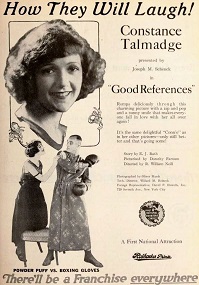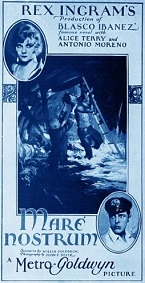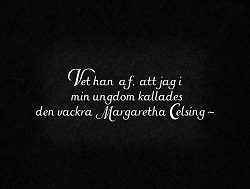
An unprecedented number--Soft Shoes, The Other Woman's Story, The Hound of the Baskervilles, Fragment of an Empire, and the short San Francisco 1906 (as it is being called)--are restorations undertaken by SFSFF itself, in collaboration with various archives and personages holding material on these titles. This means that they will have been scanned digitally, retouched, and then put back to 35mm. Of particular local interest, the short, taken shortly after that year's earthquake, was discovered two years ago at a flea market.
I have no information on the two Japanese films (An Inn in Tokyo, Policeman) or the French film (The Lighthouse Keepers) sourced from Japan, but I suspect they are all purely photochemical preservations.
Nor have I managed to find anything out about Italy's Trappola.
 |
No Man's Gold also has a strong Czech connection. Westerns, particularly those starring Tom Mix (and his frequent Czech-American co-star Eva Novak), enjoyed immense popularity in Czechoslovakia, and Fox distributed this one there with Czech intertitles. One of these nitrate prints (perhaps uniquely) survived to be copied to a safety stock dupe negative and a print in 1993 before being discarded. Reportedly, there had been no damage to the film prior to its duplication, which preserved the entire silent frame, not just the smaller portion used for sound films. On the other hand, the lab work may not have been performed to the highest standard. Interestingly, the print is tinted by the "Prague method", whereby scenes are somehow dye-bathed without needing to be separated out from the rest of the print.
 |
Svenska Filminstitutet's new restoration of Gösta Berlings saga adds 16 minutes, the entirety of the film's image area (see the above section on No Man's Gold), and (simulated) tinting and toning to a previous effort from the mid-70s. Fortunately the 1950s-era master copy (presumably a safety copy of a nitrate element) could still serve as the basis of this project, to which tinted nitrate prints from Cinemateca Portuguesa and Cinémathèque française, two black and white acetate prints from Gosfilmofond, and tinted nitrate fragments from Deutsche Kinemathek contributed additional scenes and a color scheme. The entire restoration was photochemical as far as the image is concerned, and resulted in a Desmet print
While the text of the intertitles survives in the Swedish master copy, they are not the hand-lettered and illustrated renderings originally created by Alva Lundin for the film. Only three of these cards survived on film, and an additional three are reproduced in a contemporary journal. While nearly the entire Swedish alphabet appears in these six cards in lowercase, many capitals are not represented, and those that are appear with various flourishes depending on context. A font was created in Photoshop to mimic Lundin's writing, with some capitals having a few variants and others being best guesses. Of course, there was no hope of reconstituting Lundin's charming drawings. New digital cards were then put out to film, duplicated to the correct length, and cut back into the picture.
  |
Silent shout-outs to Jillian Borders, Věroslav Hába, David Kiehn, Scott MacQueen, Patrick Stanbury, Jörgen Viman, and Todd Wiener for their fantastic assistance!
Posted December 7, 2020 at 11:48pm by angelaangie:
These new title cards were produced digitally and then incorporated into the otherwise entirely photochemical preservation.
for any query or support go here